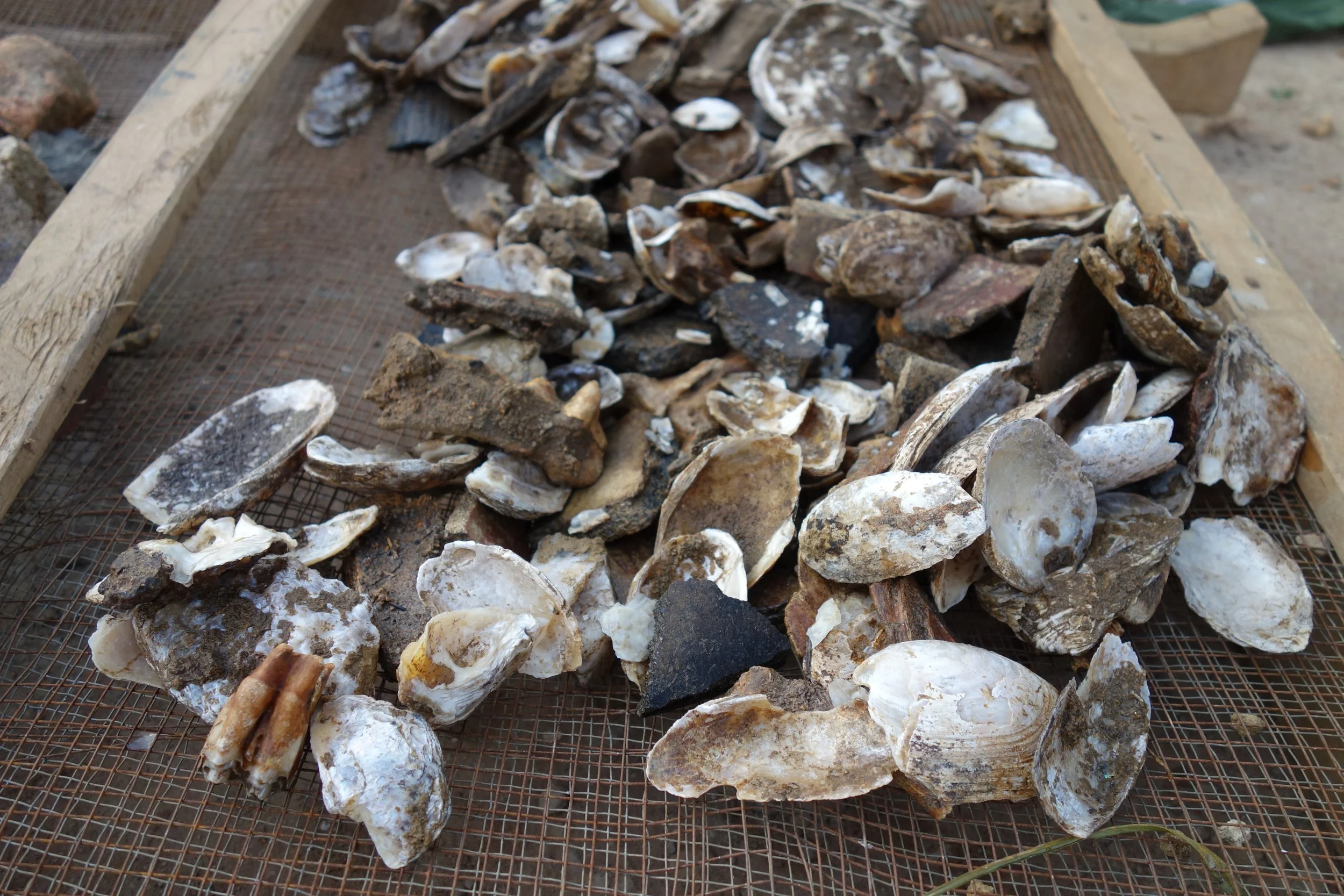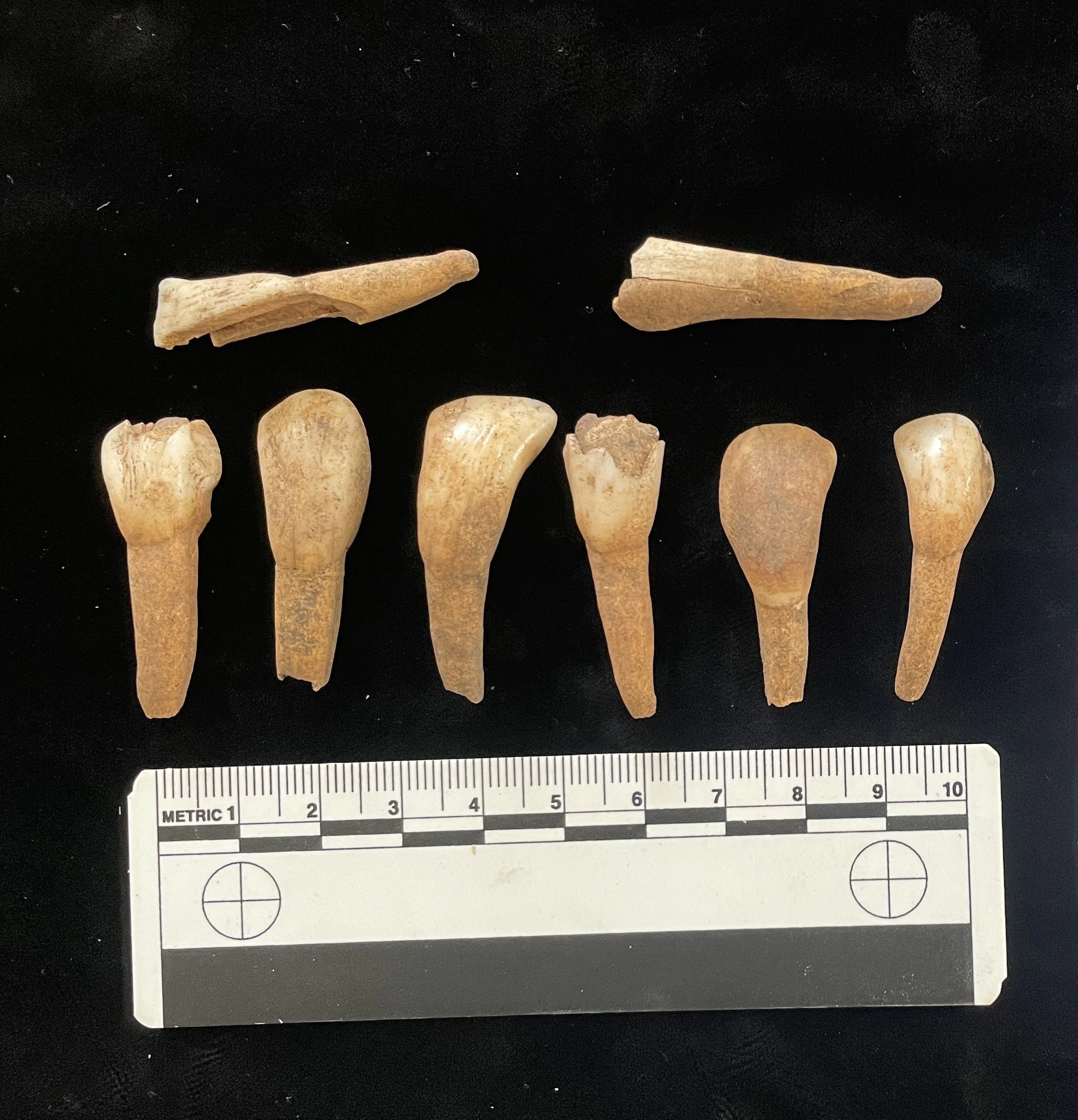
Zooarchaeology
Zooarchaeology investigates how people’s relationships with animals shaped societies across deep time. In my research, I try to push the field forward by integrating traditional morphological analyses with innovative biomolecular and geochemical approaches to address fundamental questions about adaptation, resilience, and social complexity.
Zooarchaeological finds from Uganda
Methodological Expertise
My analytical toolkit encompasses both established and emerging techniques:
Traditional Analysis: Taxonomic identification, demographic reconstruction through dental aging, taphonomic assessment of bone modification patterns, and morphometrics for distinguishing species (e.g., wild from domestic).
Biomolecular Integration: Ancient DNA analysis for tracking animal translocations and breeding practices, as well as paleoproteomics for species identification in fragmented assemblages.
Isotopic Applications: Multi-isotope analysis (carbon, nitrogen, oxygen, and strontium) for reconstructing animal diets, mobility patterns, and paleoenvironmental conditions.
Cattle incisors from Great Zimbabwe
Innovative Applications
By reconstructing past biodiversity patterns, animal management strategies, and human responses to environmental change, my research emphasizes zooarchaeology's potential for addressing relevant questions in today’s world. In doing so, this work provides frameworks for:
Conservation Planning: Establishing pre-disturbance ecological baselines for restoration initiatives
Climate Adaptation: Understanding how societies successfully navigated environmental challenges
Food Security: Documenting sustainable animal management practices from the archaeological record
Urban Planning: Revealing how past cities maintained food systems during periods of growth and stress
Collaborative Science
Modern zooarchaeology requires extensive collaboration across disciplines. I currently work with:
DNA laboratories in the UK and Germany
Geochemical facilities across Europe, North America, and Africa
And am pursuing new partnerships with:
Paleoclimatologists and ecologists for environmental reconstruction
Conservation biologists for applying archaeological insights to modern challenges
By developing new strategies for addressing current human and environmental issues, this integrated approach positions zooarchaeology at the forefront of archaeological science.

